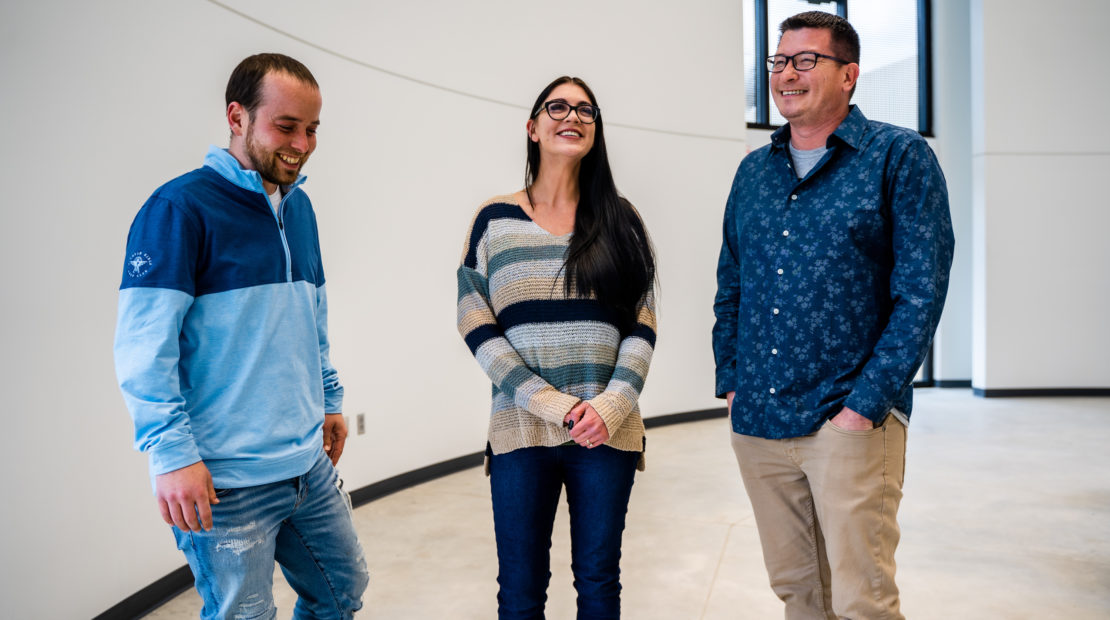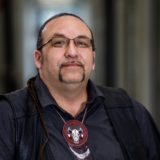
The Mni Sota Makoce Honor Tax
Contributors
-
 President Robert Larsen
President Robert Larsen -
 Jessica Intermill
Jessica Intermill
At Native Governance Center, we talk a lot about moving beyond optical allyship and taking meaningful action to support Native nations. But, what does this really look like in practice?
Jessica Intermill, a Treaty Rights and Tribal law attorney who attended our 2021 Beyond Land Acknowledgment event, felt inspired by our panelists’ conversation on voluntary land taxes. She partnered with the Lower Sioux Indian Community to create the Mni Sota Makoce Honor Tax. We sat down with both Intermill and Lower Sioux Indian Community President Robert Larsen to learn about the inspiration behind the tax, its creation, and how Lower Sioux hopes to use the funds to help its citizens thrive for the next seven generations.
The Inspiration
In 2021, our Beyond Land Acknowledgment virtual event featured two panelists who helped create the Wiyot Honor Tax. The Wiyot Honor Tax is “a voluntary annual tax paid directly to the Wiyot Nation by people who are on their traditional territories.” Think of an honor tax like a mortgage or rent. Rent or mortgage payments give us access to living space; voluntary land taxes recognize our access to stolen Indigenous land. (Read our guide to learn more about how honor taxes work and why they’re important.)
Jessica Intermill first learned about honor taxes during our event. She felt immediately inspired to create a program in Mni Sota Makoce benefitting Lower Sioux. She explains, “I was like, ‘Oh. We don’t have one here. We need one here. And I can make one here.’” Thanks to her almost fifteen years spent representing Native nations in treaty rights litigation and internal governance issues, Intermill already had strong working and personal relationships within Indian Country. She wasted no time texting Lower Sioux President Robert Larsen, floating the idea of partnering to create an honor tax.
Creating the Tax
Intermill and President Larsen agree that Tribal consent, letting nations lead, and transparency are the most important elements of creating an honor tax program in a good way. They followed a process that honored these principles when developing the Mni Sota Makoce Honor Tax. After President Larsen expressed interest in exploring the process, Intermill drafted a proposal and brought it to the full Lower Sioux Tribal Council for approval. After she participated in a few additional meetings with the legal team and the Council, Lower Sioux determined the tax would bring a net benefit to the community and passed a formal resolution affirming its support.
When working with Native nations, Intermill is always careful to avoid setting the direction. She explains, “One of my north stars when I’m doing work with Tribes is, I don’t tell the Tribe what to do. I can walk in as an attorney, I can give suggestions. But as soon as I tell a Tribe which of the options to pick, I’ve told them the wrong thing. It’s just not my place.” Intermill approached Lower Sioux knowing that Tribal leaders may not have been interested in an honor tax program. She also understood that even if accepted, finalizing the program might not have held the same priority for Lower Sioux as it did for her. When creating honor tax programs, allowing progress to unfold naturally at the pace of the relationship is key.
Throughout the process, President Larsen appreciated Intermill’s transparency and truthfulness. He believes that partnering directly with nations on honor taxes is paramount: “If you don’t engage the Tribe, that level of trust probably won’t be there.” He continues, “You need to be truthful and up front. To me, that’s the thing. I don’t want to be lied to. Or tricked. What you’re telling us may not be what we want to hear, but if we’re building a relationship, it’s not going to be the end of that relationship.”
How the Tax Works
The Mni Sota Makoce Honor Tax encourages users to make a contribution “in recognition of your life in, work on, or visit to Dakota land” and to consider the history of land theft and broken treaties that continue to impact the Lower Sioux Community today. It also prompts participants to consider the taxes they pay to local and state governments as a way to guide their creation of a meaningful honor tax amount.
All contributions made through the program go directly to the Lower Sioux Indian Community and are non-taxable. Lower Sioux set up a designated account for the payments so they’re able to track the growth of contributions over time.
Intermill hopes folks will encourage others to join and spread the word about the tax’s existence.
Program organizers are working to make the option for monthly recurring donations a future reality. (They hope to switch to a payment processor that will accommodate this option.) For now, Intermill recommends making a contribution that reflects a meaningful annual amount.
Looking to the Future
President Larsen feels optimistic about what Lower Sioux can achieve with the Honor Tax. And, Lower Sioux has outlined a set of important priorities they plan to address with the funds. Here are just a few examples:
- Support for Lower Sioux youth: Lower Sioux hopes to hire more staff for their recreation center (to promote a better staff to youth ratio) and to create drug and alcohol prevention programs for young Tribal citizens.
- Land acquisition: Lower Sioux’s current land base is small and inadequate for the size of their population. They don’t currently have enough land or housing to meet the strong demand from Tribal citizens. President Larsen explains, “Buying land is not cheap. And we’ve got to compete with farmers who have a lot of money. And connections.” Lower Sioux intends to use the funding to purchase additional acreage and to support land back efforts.
- Public education: Lower Sioux hopes to educate the general public about its history and goals through meaningful outreach. President Larsen notes, “Most people don’t know this, but we’ve lost so much. …But, we’re still here, and we’re actually growing as a Tribe.”
When asked what he wants the public to know about the Honor Tax, President Larsen noted that Lower Sioux is taking the program seriously and has a long-term plan for the funds. He also emphasized that all of the funding will go toward the community, rather than individuals.
By encouraging non-Native people to take responsibility for the history of land theft, Jessica Intermill sees an opportunity for real changemaking. She states, “It’s obviously very different to say that you’re on Dakota land versus actually doing something about it. Land taxes are an avenue for folks to really put their money where their mouth is. If we as white folks, as wašíču, talk about stolen land and treaties, then we need to actually do something.”
While valuable, honor tax programs are a small step toward repaying the debts owed to Native people. And, monetary debts aside, there’s no way to begin to make up for the relatives lost, culture suppressed, and languages damaged. Non-Native folks, especially white folks, have an obligation to do what they can to support the healing process, including through land return and monetary contributions like honor taxes.
Land tax contributors should strive to understand the why behind the feelings of guilt they may have about the past. Intermill explains, “That’s what I hope that the Honor Tax can accomplish. Obviously, there’s the wealth transfer, the wealth return that’s really important. But also, it should be educational. Not just, ‘Oh, you feel guilty because you’re on Dakota land. I want you to know why you feel guilty and what the actual history is.’”
Next Steps
If you’re feeling inspired to create a land tax in your area, Jessica Intermill recommends prioritizing real relationships with Native people and exploring existing resources first. She explains, “Build on the relationships you have with community. Or, if you don’t know a Native person, start by learning from sources online. Watch Reservation Dogs. Listen to NGC’s webinars. Put yourself in Native spaces.”
The Mni Sota Makoce Honor Tax succeeded because of strong, pre-existing relationships built on trust. Work to establish those relationships before jumping into creating an honor tax. And, know that some Native nations may not want to create an honor tax program (or to partner with you, specifically, on creating one). They may not want the extra attention, or a program simply may not be a priority for them at this time.
Seek out existing honor tax infrastructure and guides, rather than duplicating efforts. Intermill maintains a running list of reparative actions on her website that includes several honor tax program examples. Intermill also recommends our Voluntary Land Tax Guide and this Resource Guide created by other honor tax and voluntary rent groups as starting points.
Remember, at the end of the day, approaching the process through the lens of being a good relative matters. This looks like centering Tribal consent and transparency while decentering your own desire to lead or set a timeline.
Are you working to create an honor tax program in your Mni Sota Makoce, North Dakota, or South Dakota? We’d love to hear from you! Contact us with details about your program, and we’ll add it to our resources list.